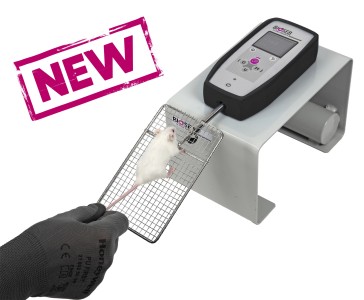Authors
G. Busto, A. Jauregui, R. Cuellar
Lab
Instituto de Investigación Sanitaria Biodonostia. Donostia-San Sebastián, Gipuzkoa
Journal
ARTROSCOPIA Y CIRUGÍA ARTICULAR
Abstract
Aim:
To develop an animal model of chronic rotator cuff tear. To induce a chronic pattern similar to human being.
Methods:
A randomized with 40 Wistar-Ham rats 200300 grams. Both forelimbs in 2 groups were involved: a) simple technique of tendon detachment (ST); b) technique in which suprascapular nerve denervation (DT) was added. At 4, 8 and 12 weeks were made macro- and microscopic study. The contralateral side served as control.
Results:
Both the TS and TD weight and volume produced supraspinatus (SE) and infraspinatus (IE) below the shoulder control. This effect was maintained over time. Muscle fatty infiltration increased over time and was higher at 12 weeks by TD in the muscles SE (p < 0.004) and IE (p < 0.02) than in controls. We found no significant differences in tendon parameters.
Conclusions:
The changes in muscle histological properties were those of a chronic rotator cuff tear model reproducible and maintained over time. The effect of denervation in the group with the DT technique produced greater muscle fatty infiltration maintained over time highest ranking in the SE. We found no significant differences in the studied parameters tendon and was indifferent perform a technique or another as long as it was complete section of 2 or more rotator cuff tendons.
BIOSEB Instruments Used
Grip strength test (BIO-GS3)
Source :

 Pain - Thermal Allodynia / Hyperalgesia
Pain - Thermal Allodynia / Hyperalgesia Pain - Spontaneous Pain - Postural Deficit
Pain - Spontaneous Pain - Postural Deficit Pain - Mechanical Allodynia / Hyperalgesia
Pain - Mechanical Allodynia / Hyperalgesia Learning/Memory - Attention - Addiction
Learning/Memory - Attention - Addiction Physiology & Respiratory Research
Physiology & Respiratory Research











![Dynamic Weight Bearing 2.0 – Postural Module [Add-on]](https://bioseb.com/733-home_default/dynamic-weight-bearing-20-add-on-postural-module.jpg)
























 Pain
Pain Central Nervous System (CNS)
Central Nervous System (CNS) Neurodegeneration
Neurodegeneration Sensory system
Sensory system Motor control
Motor control Mood Disorders
Mood Disorders Other disorders
Other disorders Muscular system
Muscular system Joints
Joints Metabolism
Metabolism Cross-disciplinary subjects
Cross-disciplinary subjects CONFERENCES & MEETINGS
CONFERENCES & MEETINGS 